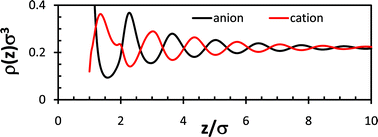A classical density functional theory for interfacial layering of ionic liquids
Abstract

* Corresponding authors
a
Departments of Chemical and Environmental Engineering and Mathematics, University of California, Riverside, CA, USA
E-mail:
jwu@engr.ucr.edu
b California Energy Commission, Sacramento, CA, USA
c
Chemical Sciences Division, Oak Ridge National Laboratory, Oak Ridge, TN, USA
E-mail:
deen.jiang@gmail.com
d
Department of Chemistry and Biochemistry, Brigham Young University, Provo, UT, USA
E-mail:
doug@chem.byu.edu

 Please wait while we load your content...
Something went wrong. Try again?
Please wait while we load your content...
Something went wrong. Try again?
J. Wu, T. Jiang, D. Jiang, Z. Jin and D. Henderson, Soft Matter, 2011, 7, 11222 DOI: 10.1039/C1SM06089A
To request permission to reproduce material from this article, please go to the Copyright Clearance Center request page.
If you are an author contributing to an RSC publication, you do not need to request permission provided correct acknowledgement is given.
If you are the author of this article, you do not need to request permission to reproduce figures and diagrams provided correct acknowledgement is given. If you want to reproduce the whole article in a third-party publication (excluding your thesis/dissertation for which permission is not required) please go to the Copyright Clearance Center request page.
Read more about how to correctly acknowledge RSC content.
 Fetching data from CrossRef.
Fetching data from CrossRef.
This may take some time to load.
Loading related content
